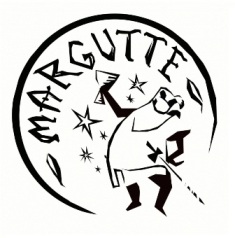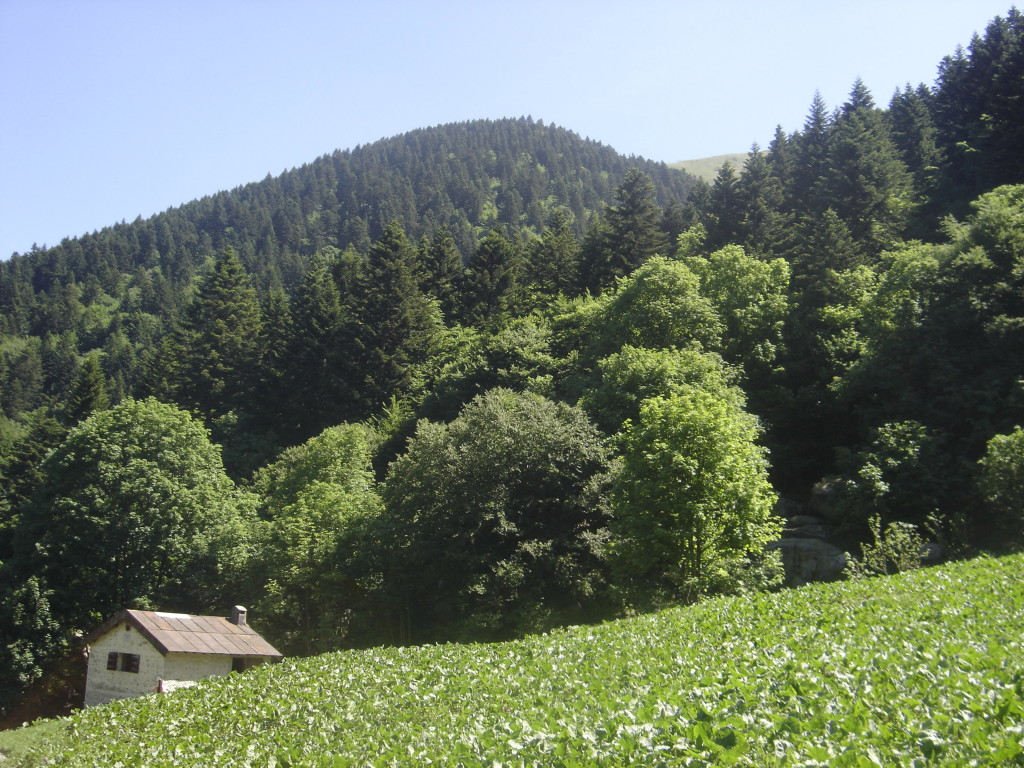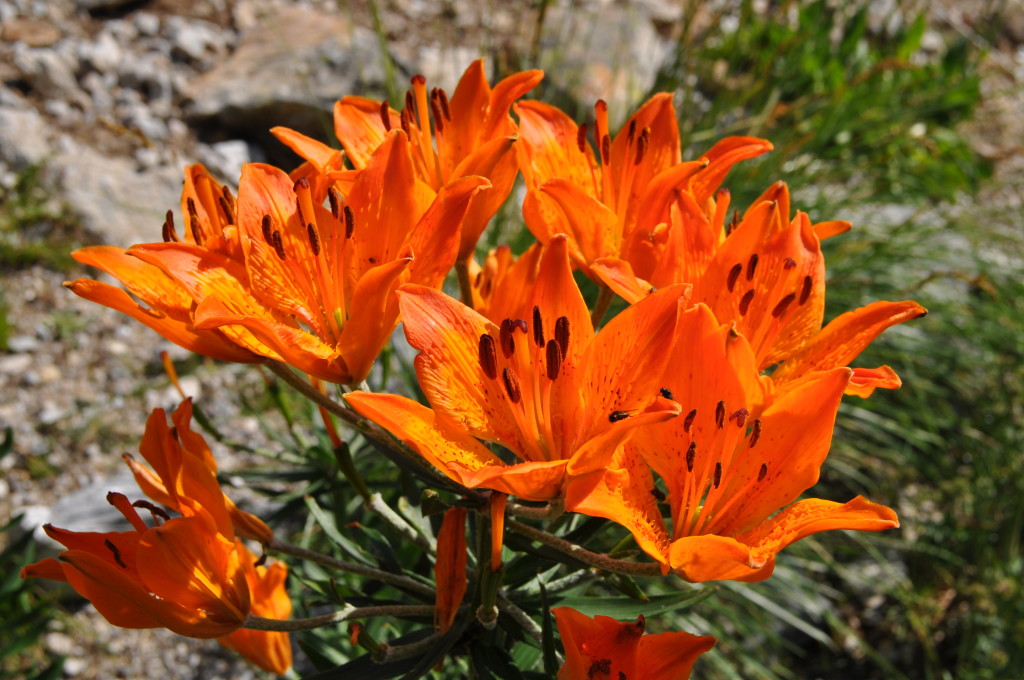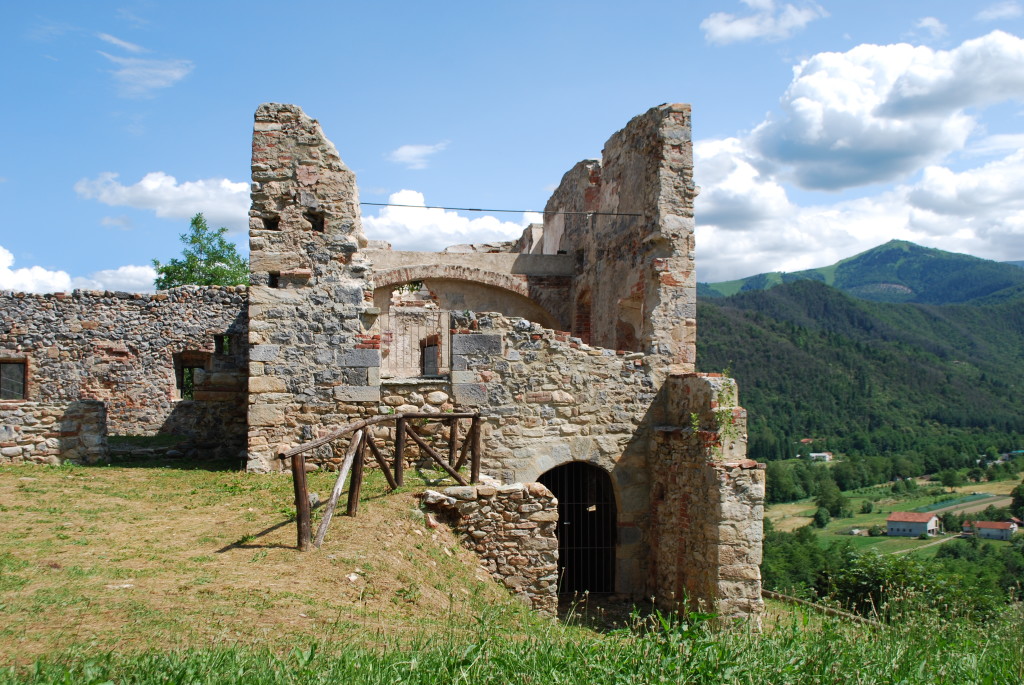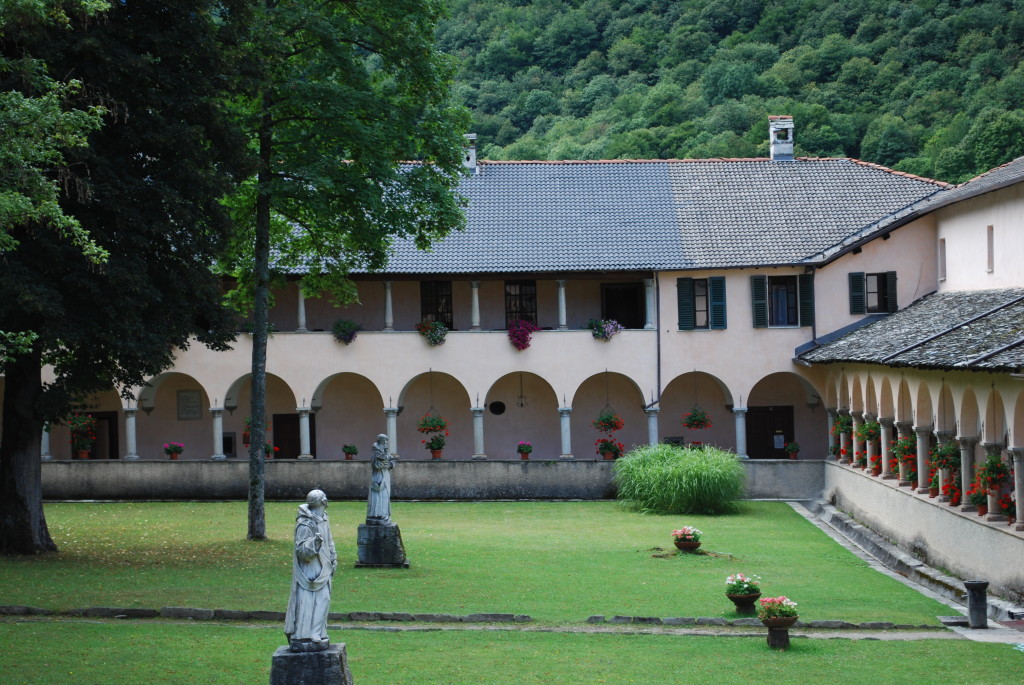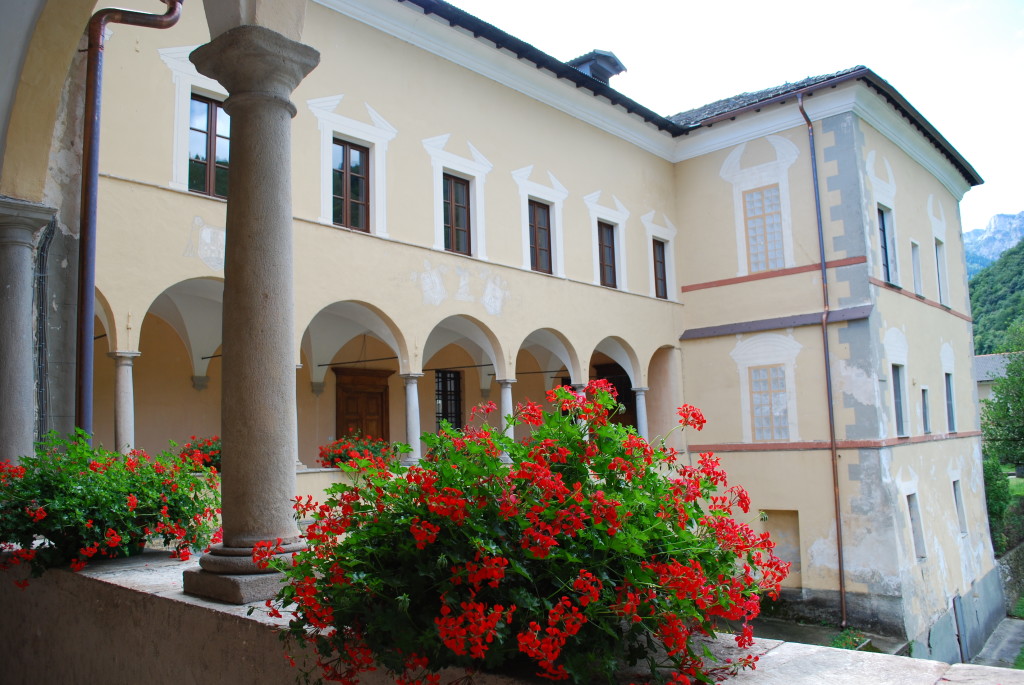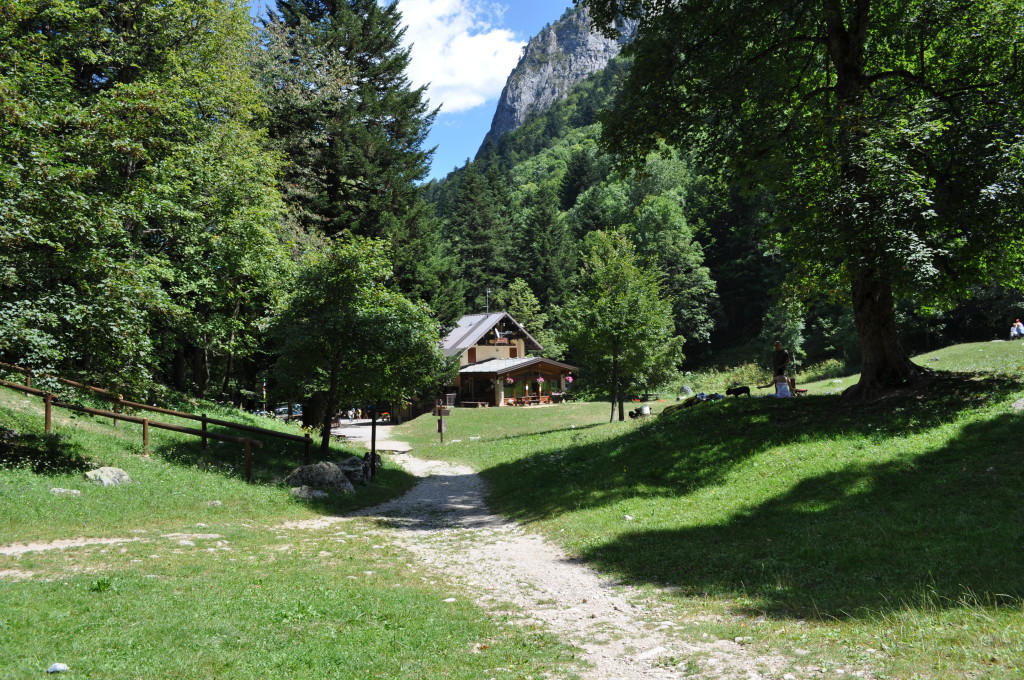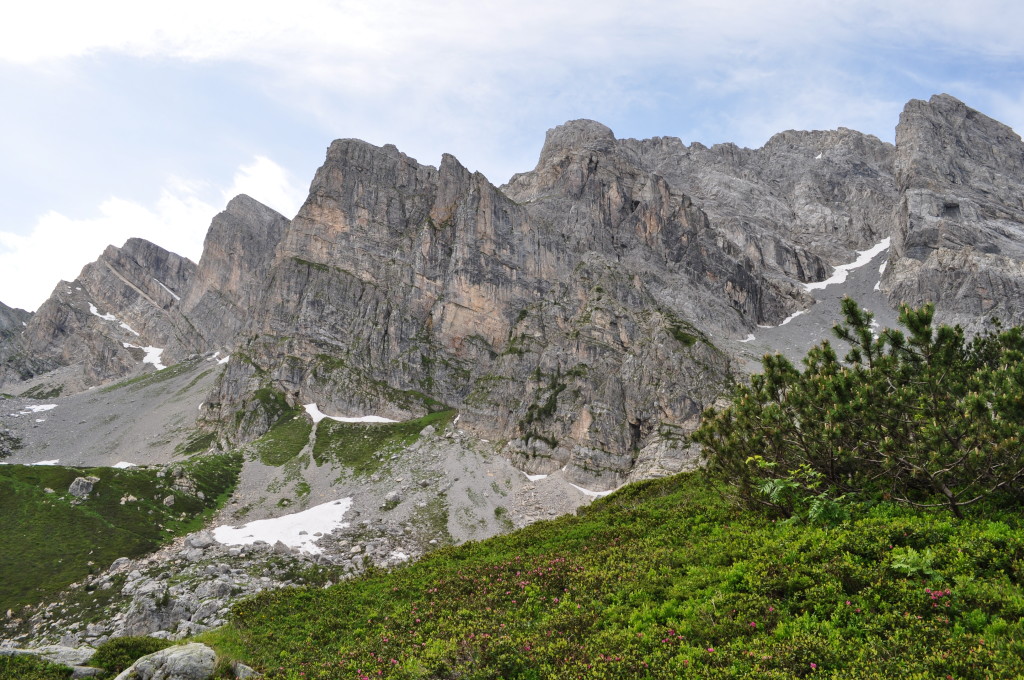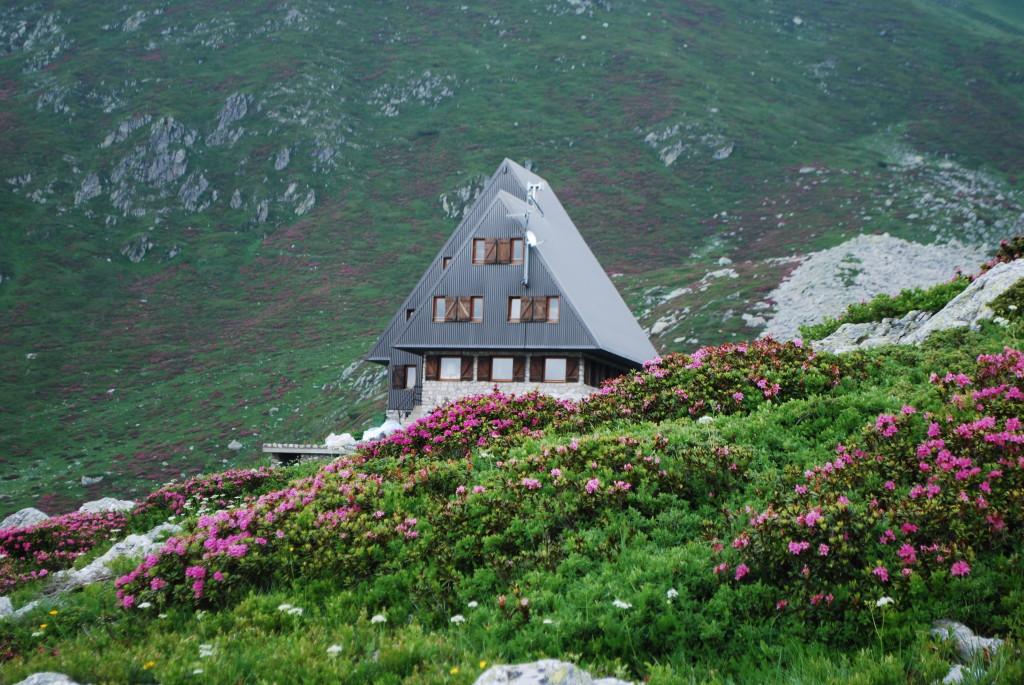ROBERTA FERRARIS
The Pesio Valley is one of the most woody valleys of the Western Alps due to its proximity to the sea and to abundant rainfalls. For centuries, the local forest resources have been wisely administered by the Charterhouse of Pesio. At the dawn of the industrial revolution, in the second half of 18th century, wood was used to produce coal for Monregalese factories. Today, the valley and its Natural Park (Parco Alta Valle Pesio e Tanaro) rely on sustainable tourism as major economic resource.
VISITING ROUTE
From Cuneo, the state road SP21 brings to Boves. The village lies on the Padan plain and own an enjoyable historical centre with small traditional houses and streets flanked with “bialere”, artificial channels. The centre preserves a 16th century fountain and the church dedicated to St. Bartholomew (17th century). South-east the village, along Via Roncaia, at the entrance of the Colla Valley the Madonna dei Boschi Sanctuary is to be found. Founded in the 13th century by the Benedictines the sanctuary keeps in its interior some valuable frescoes (15th – 18th centuries).
Following the SP21, the itinerary reaches Peveragno, a farming village at the limit of the plain. The village has preserved the “ricetto” a medieval fortified nucleus with access by a medieval entrance. The uncompleted church of Confraternita della Santa Croce was probably designed by Francesco Gallo (18th century).
The short Pesio Valley begins at Chiusa Pesio, a farming village on a woody mountain slope. The village keeps the ruins of the Castle of Mirabello, built on the Cavanero Mountain in the 16th century by the Marquis of Ceva, holding the Chiusa fief. The Marquis palace is today used as town hall. It was built in the 15th century on the ruins of a castle and of a ancient glasswork site. For centuries, the production of crystalware and ceramics has represented a prosper activity in Chiusa Pesio. In 1759, the Regia Fabbrica dei Cristalli (the Royal Crystal Factory) was created as a mixed public-private company. The factory stood out for the production of glass and crystalware of high quality and employed skilled labour in part coming from Boemia area. The town hall hosts the Museo della Regia Fabbrica dei cristalli e della ceramica, (The Museum of the Royal Crystal and Ceramics Factory) dedicated to industrial and hand-crafted activities and exposing some precious pieces. A museum section is dedicated to some Neolithic finds coming from the archaeological area of the Cavanero Mountain. The town hall also hosts the Museo della Resistenza, (Museum of the Resistance). The administrative space of the Natural Park Upper Pesio and Tanaro Valley, toward the Charterhouse, hosts a photograph exhibition, “collezione fotografica Michele Pellegrino”, dedicated to the mountain and the monastic life in the ‘70s.
The itinerary continues along the SP42, through the hamlets Vigna and San Bartolomeo, farming territory of the Charterhouse of Pesio. The monastery was funded in 1173 by Carthusian monks coming from the nearby Casotto Valley. The Charterhouse includes buildings of different ages. On the right of the road the Correria (the first settlement) is to be found, with the “oratorio di S. Giovanni” (Saint John oratory) dating back to the 13th century. On the left stands the ancient mill before arriving at the Charterhouse where the road ends. A wide door beyond the bridge on the river Pesio is the access to the foundation. The buildings gathered around the cloister and date back to several ages, from the 16th to the 19th centuries. Many buildings were designed by the architect Giovenale Boetto, of the Savoy court, which in the middle of the 16th century realized the building with loggia and planned the new façade of the church.
Today the Charterhouse hosts a community of missionaries of the Consolata order. In the past, the relationship with the people of Chiusa, which formerly claimed the use of local forests and pastures, was difficult so as to cause extended riots. The Charterhouse activity, after hundred years of monastic life, was abolished at Napoleon time (1802) and its goods were confiscated and dislocated and the buildings converted in hotel and hydrotherapeutic resort. The Charterhouse hosted Stendhal, Cavour, Giolitti and some members of the royal family. This activity closed up during the First World War. It became monastery again in 1934.
The itinerary may continue on foot along several walking paths of the Park. A short walk brings to Pian delle Gorre, starting point for more challenging routes. The tour of the Marguareis Mountain (2651 m) for example lasts five days and disclose to the visitor different park natural environments. Less demanding route is the path to the Pis del Pesio, an extraordinary waterfall with 30 m jump.
Natural Park of Upper Pesio and Tanaro Valley
The area of the park extends for about 6670 hectares on the territory that formerly belonged to the Charterhouse of Pesio. The protected territory includes the upper Pesio valley and a part of the Tanaro valley on two sides of the Marguareis Mountain, the highest top of the Ligurian Alps. The proximity to the Mediterranean sea favoured the development of local biodiversity: the park hosts around a quarter of all botanic species known in Italy. In the last years, projects of reintroduction of deer and roebuck were carried out. One effect of the presence of these animals was the return of the wolf in the territory. The Marguareis Mountain have karstic origins and it is characterized by the presence of several caves – many of them still unexplored – of dolines, narrow depressions, and of other forms of erosion remarkable especially in the Càrsene Valley. The park also attracts people in winter time for itineraries suitable for ski and snowshoes.
Photo Archivio Parco Marguareis
